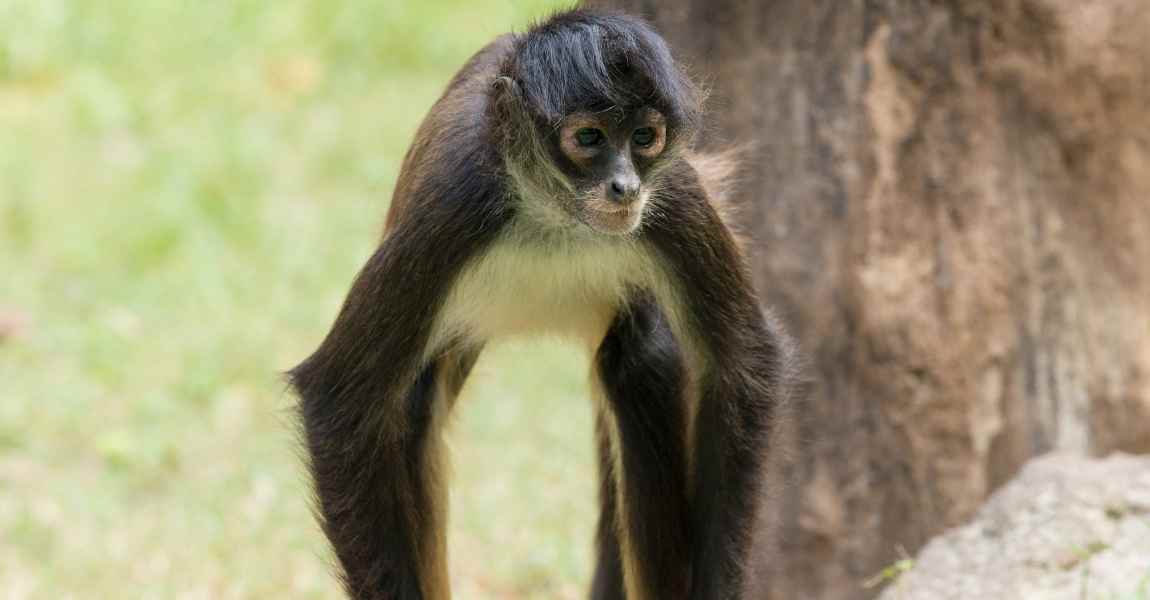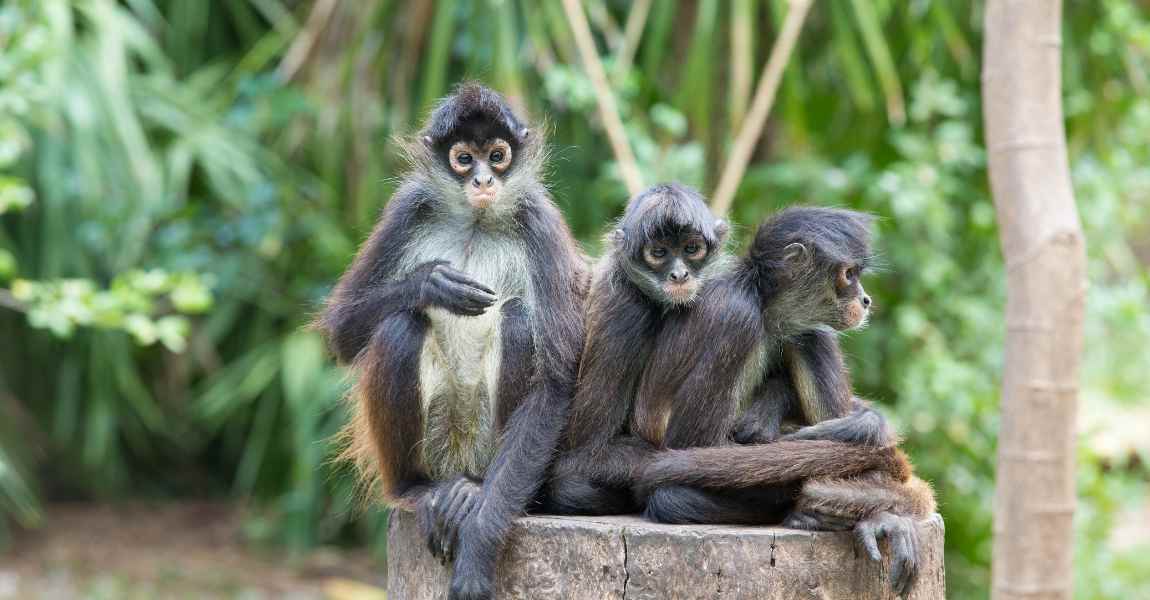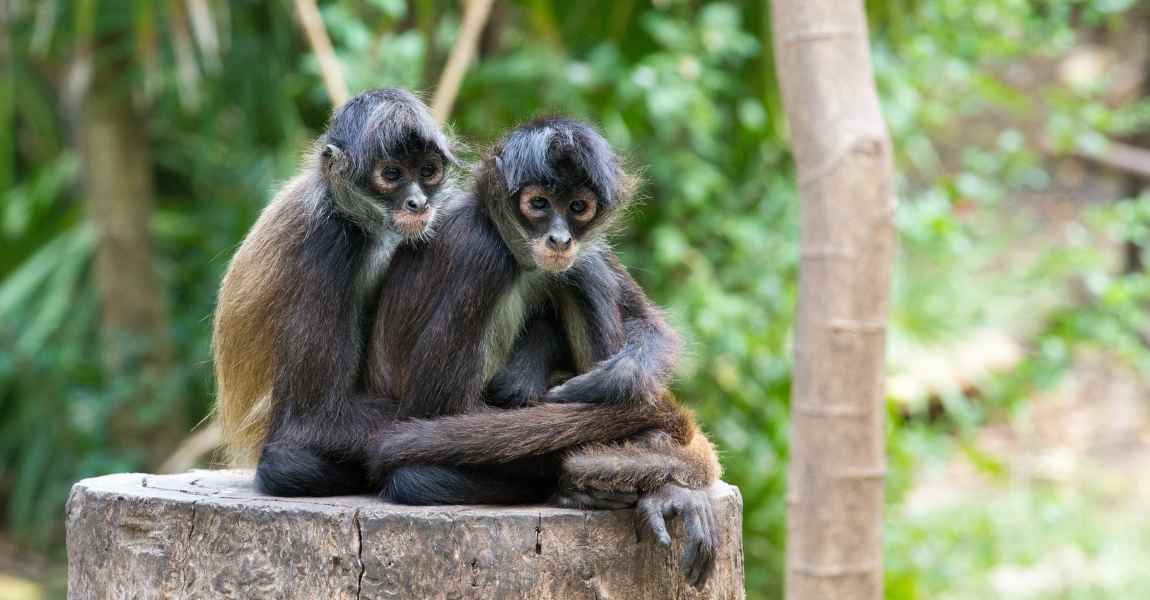Spider Monkey (Disambiguation)
The term "Spider Monkey" primarily refers to a group of primates known for their agility and prehensile tails, which allow them to swing gracefully through the canopies of tropical forests. However, "Spider Monkey" can also be found in various other contexts, ranging from cultural references to scientific uses and even video games. This article explores the many facets of the term "Spider Monkey," with a primary focus on the species itself, offering an in-depth understanding of these remarkable animals.
Spider Monkey as a Species
Overview of Spider Monkeys (Ateles Genus)
Spider monkeys belong to the Ateles genus, part of the Atelidae family. This group of New World monkeys is characterized by long limbs and a tail that resembles the legs of a spider, hence the name. The genus includes seven species, all known for their high intelligence and acrobatic nature. Their impressive mobility through tree canopies is largely attributed to their prehensile tail, often described as a fifth limb that they use to grasp branches while foraging for food or moving between trees.
Physical Characteristics and Behavior
Spider monkeys are relatively large compared to other primates, with a body length of 40-70 cm (16-28 inches) and a tail reaching up to 90 cm (35 inches). They have long, spindly limbs, rounded bellies, and small heads. Their fur color ranges from black to brown, depending on the species, and they often have lighter-colored faces.
Spider monkeys are highly social animals that live in troops ranging from 15 to 40 members. These groups often split into smaller bands during the day, a behavior known as fission-fusion. They rely heavily on vocalizations, body postures, and facial expressions for communication, which underscores their complex social structure.

Habitat and Distribution
Spider monkeys are native to the tropical forests of Central and South America, with their range spanning from Mexico down to Brazil. They prefer undisturbed, mature forests and spend nearly all their time in the trees, rarely descending to the ground. Spider monkeys are particularly fond of high forest canopies, where they feel safest and can forage without much disturbance.
Diet and Role in the Ecosystem
As frugivores, spider monkeys primarily feed on fruits, but they also consume seeds, leaves, flowers, and insects. This diet plays a vital role in the ecosystem since spider monkeys contribute significantly to seed dispersal, helping maintain the health and regeneration of the forests in which they live. By spreading seeds across vast distances, they ensure the growth of many plant species, supporting a rich biodiversity.
Cultural and Linguistic References
Spider Monkey in Popular Culture
The term "spider monkey" is also found in various areas of popular culture, often reflecting the animal's agile and spirited nature. For example, spider monkeys have appeared in animated movies like Rio, highlighting their lively personality and charm. In video games such as Donkey Kong Country, the term evokes the idea of tree-swinging agility, adding an adventurous element to the character.
In literature, spider monkeys are often used to symbolize freedom and unhindered movement, due to their ability to move effortlessly through dense rainforests. The term has also appeared in comedic contexts, sometimes used humorously to describe someone with boundless energy or flexibility.
Historical or Symbolic Meanings
In some indigenous cultures of Central and South America, spider monkeys hold a symbolic presence. They are often associated with playfulness, adaptability, and communication. In Mayan mythology, for example, spider monkeys represent artistry and dance, emphasizing the importance of creativity in human life.
Science and Other Contexts
Use of "Spider Monkey" in Scientific Research
Interestingly, the term "spider monkey" has also been used in scientific research beyond primatology. In robotics and engineering, a "spider monkey" algorithm refers to an optimization technique that mimics the spider monkey's group behavior and social structure to solve complex computational problems.
Metaphorical Uses and Nicknames
The agility and flexibility of spider monkeys have led to their name being used metaphorically. In everyday language, referring to someone as a "spider monkey" can imply that they are exceptionally agile or clingy, much like how spider monkeys cling to branches or to their mothers as infants. This usage conveys a sense of adaptability and tenacity.
Spider Monkeys as Exotic Animals

Intriguing Facts About Spider Monkeys
- Prehensile Tail: Spider monkeys' tails are so versatile that they can even be used for tasks like picking up small objects.
- Social Intelligence: They display remarkable intelligence, particularly in social contexts, remembering fruiting schedules to optimize foraging routes.
- Unique Anatomy: Unlike other primates, spider monkeys lack a thumb, allowing them to move more easily through the trees.

The term "Spider Monkey" encompasses far more than just a fascinating primate species. From its central association with the Ateles genus, known for its intelligence and agility, to its various uses in popular culture, science, and colloquial language, "Spider Monkey" is a term that evokes an array of meanings. Despite their charm, the challenges spider monkeys face—from the illegal pet trade to habitat destruction—underscore the need for conservation and ethical considerations when interacting with these incredible creatures.
As a species that plays a vital role in maintaining the health of tropical forests, spider monkeys deserve our respect and protection. Understanding their ecology, behavior, and the challenges they face helps ensure that these remarkable animals continue to thrive in the wild.


